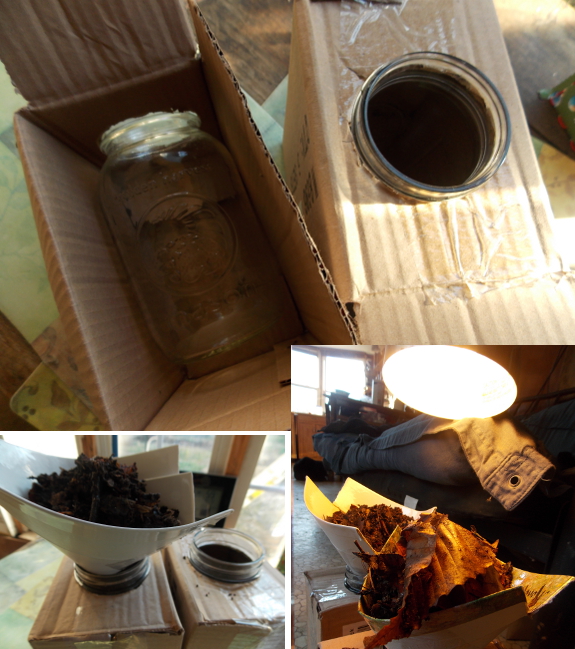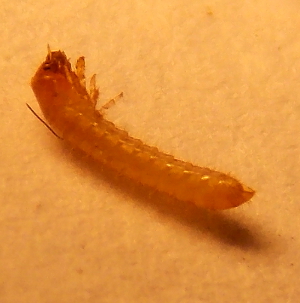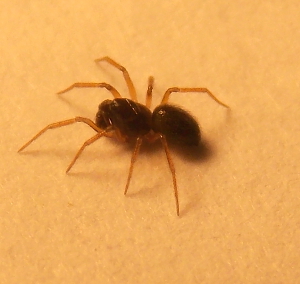
How to see invertebrates in the soil

 If
this week's lunchtime series has made you want to learn more about life
in the soil, there are several ways to see the cast of characters with
your own eyes. I tried out a homemade Berlese funnel and quickly
rustled up a tiny spider and two beetle larvae, although I took the
contraption apart after a couple of hours instead of letting it run the
recommended five to seven days. A Berlese funnel can be made out
of any materials as long as it contains a bright light source on top, a
funnel holding your soil, and a dark container below for critters to
escape into.
If
this week's lunchtime series has made you want to learn more about life
in the soil, there are several ways to see the cast of characters with
your own eyes. I tried out a homemade Berlese funnel and quickly
rustled up a tiny spider and two beetle larvae, although I took the
contraption apart after a couple of hours instead of letting it run the
recommended five to seven days. A Berlese funnel can be made out
of any materials as long as it contains a bright light source on top, a
funnel holding your soil, and a dark container below for critters to
escape into.
Another option is the
Baermann funnel, which is often used to sample nematodes, potworms,
protozoa, and rotifers. In this case, the soil is wrapped in
cheesecloth and placed in a corked funnel, which is then filled with
water. Once you remove the cork, the water (and critters) are
drained out into the jar below. Baermann funnels tend to turn up
smaller organisms than the Berlese funnel does,  so you'll want to check out the results under a microscope.
so you'll want to check out the results under a microscope.
If you're more interested
in big invertebrates, like beetles, why not make a pitfall trap?
Dig a hole in the forest large enough to insert a mason jar into, then
elevate a rock or board just far enough above the opening so that an
insect can easily crawl underneath. Pitfall traps are usually
considered catch-and-release traps, so you'll want to check it at least
once a day so your prey doesn't perish.
Of course, most critters
are napping right now during our cold winter, but you're likely to find
life hopping around in the warmth of your compost pile. Or maybe
in the deep litter of your chicken coop? I'd love to see your results if you start hunting down the life in the soil.
| This post is part of our Life in the Soil lunchtime series.
Read all of the entries: |
Want more in-depth information? Browse through our books.
Or explore more posts by date or by subject.
About us: Anna Hess and Mark Hamilton spent over a decade living self-sufficiently in the mountains of Virginia before moving north to start over from scratch in the foothills of Ohio. They've experimented with permaculture, no-till gardening, trailersteading, home-based microbusinesses and much more, writing about their adventures in both blogs and books.
Want to be notified when new comments are posted on this page? Click on the RSS button after you add a comment to subscribe to the comment feed, or simply check the box beside "email replies to me" while writing your comment.
